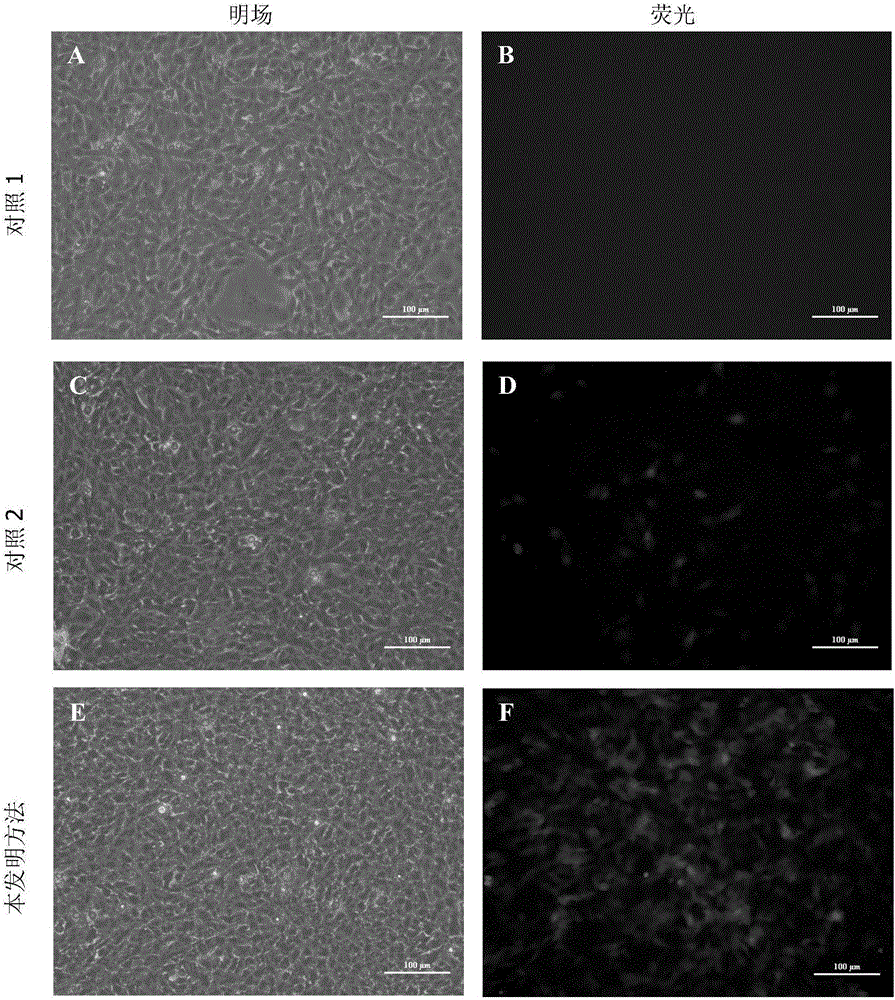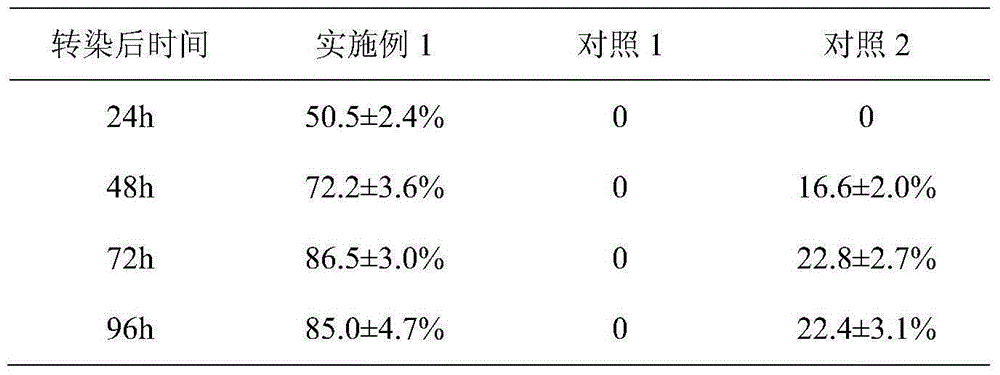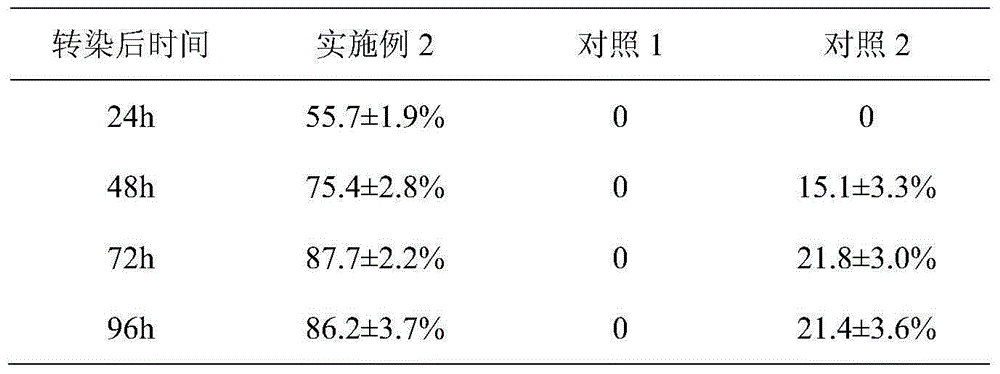Method for transfecting fish or amphibia cell line by using slow virus
A technology of lentivirus transfection and cell line, which is applied in the field of genetic engineering, can solve the problems that the research on lentivirus transfection of fish cell lines and amphibian cell lines has not been reported yet, and achieves strong repeatability, high efficiency, and easy operation. simple effect
- Summary
- Abstract
- Description
- Claims
- Application Information
AI Technical Summary
Problems solved by technology
Method used
Image
Examples
Embodiment 1
[0024] A method for transducing fish cell lines with lentivirus, including the following steps:
[0025] In this example, lentivirus packaging and Lipofectamine 2000 promote the lentivirus infection of grass carp kidney cell line (CIK), and the transduction efficiency of lentivirus is detected by observing the expression of green fluorescent protein GFP under a fluorescence microscope.
[0026] 1. Packaging of lentivirus and preparation of virus suspension
[0027] A three-plasmid system was used to prepare the lentivirus, the packaging plasmid pCMVΔR8.2Δvpr, the transfer plasmid DHIV-CTE inserted the green fluorescent protein (GFP) reporter gene, and the outer membrane protein particle pCMV-VSV-G. The three plasmids were all provided by Dr. Yuanan from the University of Hawaii Lu Huizeng (Zeng L, Planelles V, Sui Z, et al. HIV-1-based defective lentiviral vectors efficiently transduce human monocytes-derived macrophages and suppress replication of wild-type HIV-1. Journal of Gene Me...
Embodiment 2
[0042] Lentiviral transfection of spathian sturgeon fin ray tissue cell line
[0043] Same as Example 1
[0044] Table 2 Different methods of lentiviral transfection efficiency of S. spathula fin ray tissue cells
[0045]
Embodiment 3
[0047] The steps for transfecting giant salamander muscle tissue cell line with lentivirus include:
[0048] Except for step 2 of embodiment 1, the steps of step 1) are:
[0049] 1) Take a sterile EP tube and add 250μL of serum-free M199 medium, add 10μL of Lipofectamine 2000 and let it stand for 5 minutes, then add the diluted lentivirus suspension (MOI=100) and incubate for 10 minutes, then add it to the cell culture well and place it at 30℃ After culturing in an incubator for 2 hours, transfer to a 26°C incubator for 2 hours, then transfer to a 20°C incubator for 2 hours, aspirate the medium, and add 2 mL of fresh M199 medium containing 10% fetal bovine serum to continue the culture;
[0050] The remaining steps are the same as in Example 1.
[0051] Table 3 Different methods of lentivirus transfection efficiency of giant salamander muscle tissue cells
[0052]
PUM
 Login to view more
Login to view more Abstract
Description
Claims
Application Information
 Login to view more
Login to view more - R&D Engineer
- R&D Manager
- IP Professional
- Industry Leading Data Capabilities
- Powerful AI technology
- Patent DNA Extraction
Browse by: Latest US Patents, China's latest patents, Technical Efficacy Thesaurus, Application Domain, Technology Topic.
© 2024 PatSnap. All rights reserved.Legal|Privacy policy|Modern Slavery Act Transparency Statement|Sitemap



